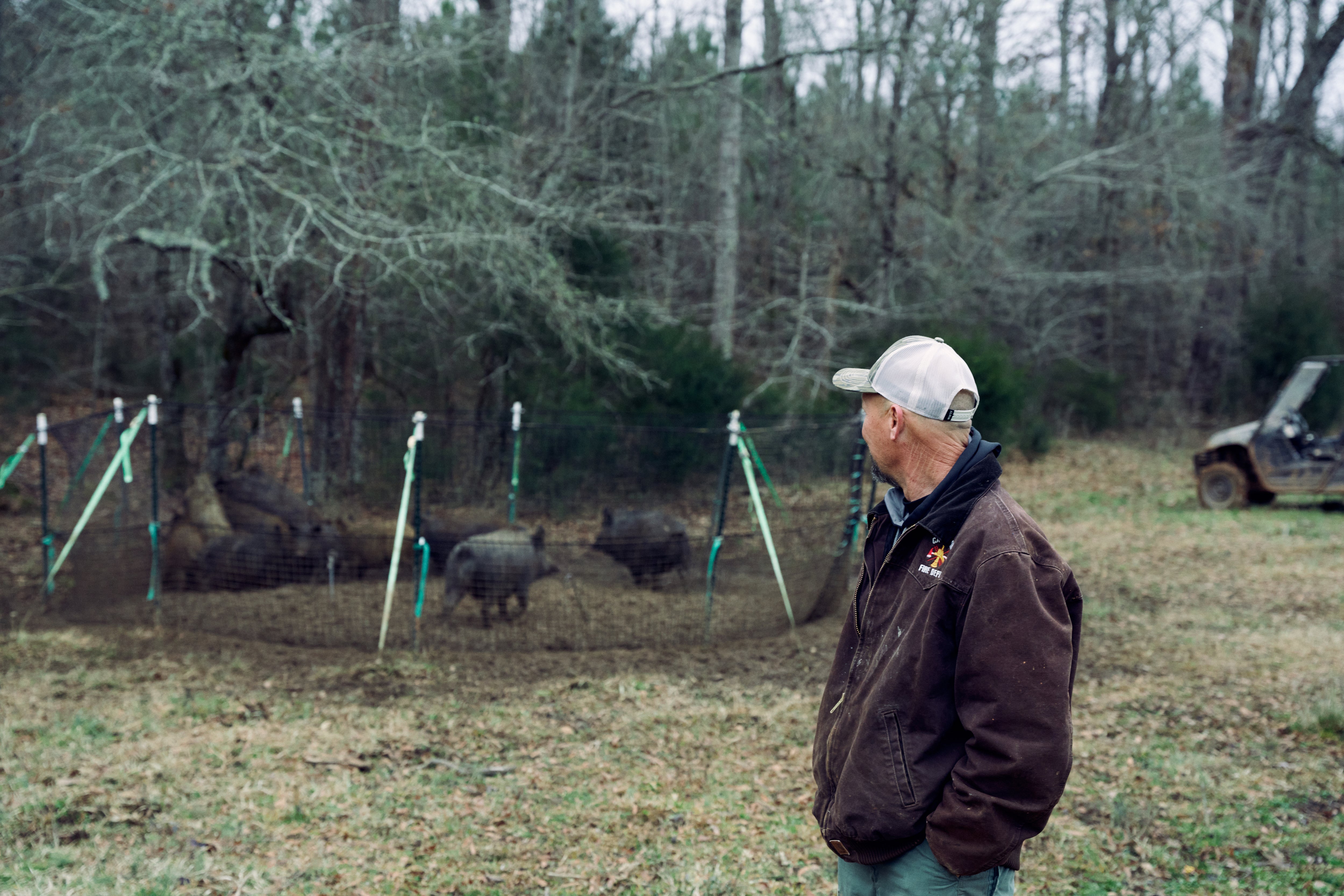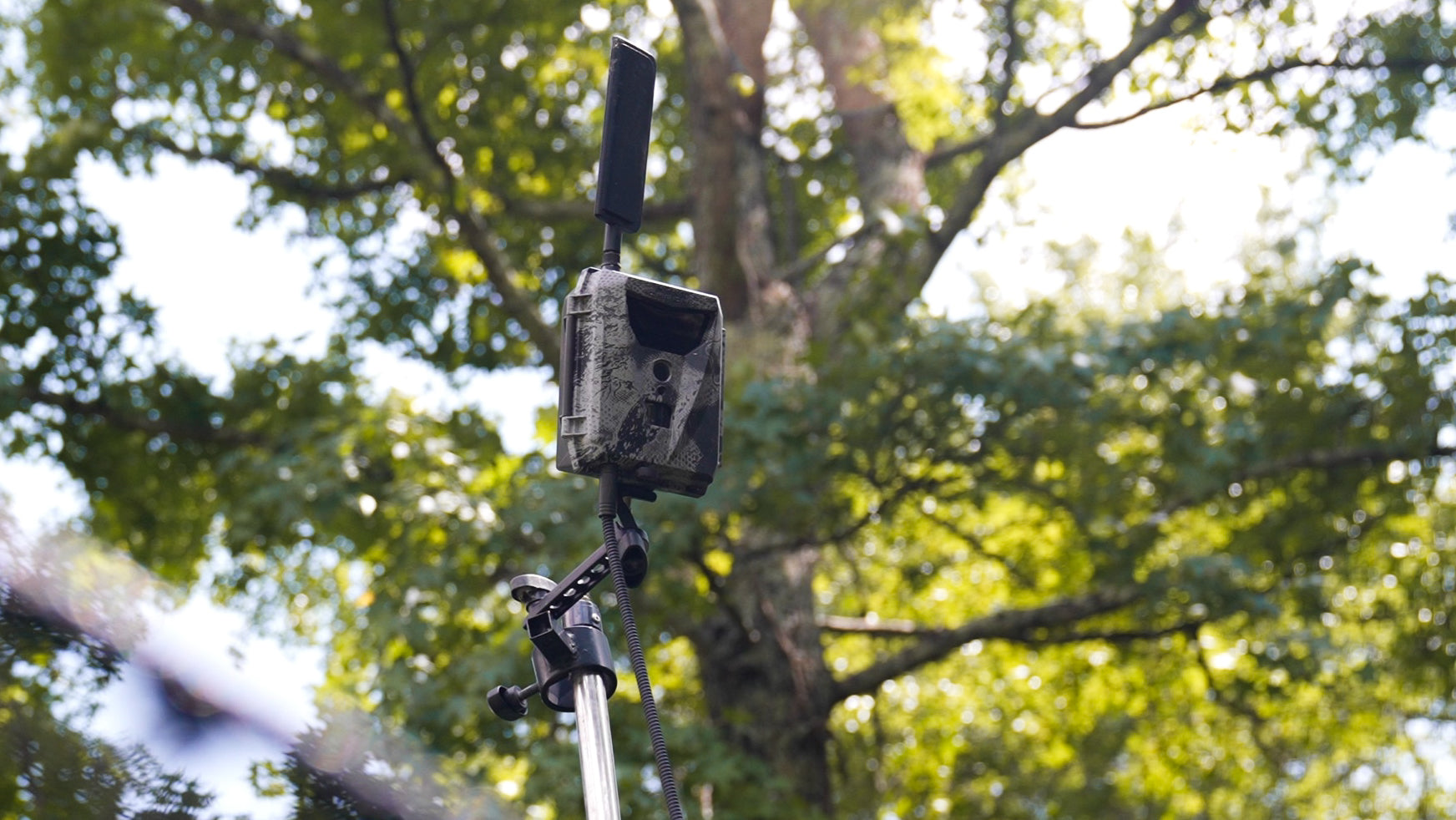How does the Pig Brig Trap Catch Wild Hogs?

How to Trap Wild Hogs
Once you’ve got a hog problem, you need to get rid of it – fast and completely. In fact, to truly protect your land and livelihood from the damage caused by feral hogs, you have to catch them all. A group of hogs, or pigs, is called a “sounder.” To rid your land of feral hogs, you must trap the whole sounder. And the best way to do that is with a Pig Brig™ Trap System.
While corral trap manufacturers make "multi-catch" systems, the Pig Brig™ Trap is the only "continuous trap" system available. You set it, condition pigs to it, and then it keeps on trapping those pigs all night long.



There are no gates and triggers to reset. In fact, the only “trigger” is the feral hog’s rooting instinct. They root under the netting to get to the bait. And because no loud gates are crashing down behind them, their buddies don’t run away. The netting looks natural, and there are no metal banging noises to startle them, so feral hogs keep rooting in – one at a time until the trap has caught them all.
And, with double-walled, 8,000 ft-lb dynamic drop test netting, there’s no escape.
Ironic, isn’t it? The rooting instinct, the very behavior that leads feral hogs to destroy your land and livelihood, is the same behavior that leads them into the trap.
Want to see it in action? Here are a few videos.
More than building the most effective way to trap feral hogs, Pig Brig Trap Systems is building a community of farmers, hunters, landowners, and conservationists who are working together to reduce the economic and environmental impact feral hogs have on our land.
Whether it’s explaining how the trap works or providing tips for trap placement, or better baiting strategies, we have a team of trappers here to help.
In addition to live customer service and one-on-one consultation, we also offer trap owners a private Facebook forum where we all gather to share best practices.
The only way to solve your feral hog problem for good – to truly protect your land – is to catch them all.
So, let’s get started.

 FINANCING AVAILABLE
FINANCING AVAILABLE



